
Beginner's Guide: Growing and Caring for Lilacs
Published: 02/04/2025 | Updated: 02/04/2025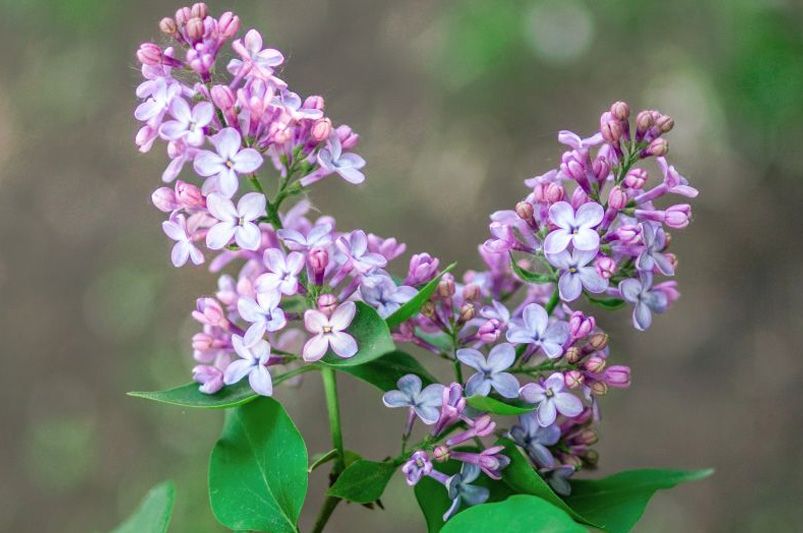
Key Highlights
- Lilacs are hardy shrubs that thrive in full sun and well-drained soil.
- These fragrant flowers are relatively low-maintenance and come in various colors and sizes.
- Plant lilacs in spring or fall and allow for adequate spacing based on the variety.
- Prune annually after blooming to maintain shape and encourage a bountiful display of flowers.
- Lilacs are generally pest-free but can be susceptible to powdery mildew, especially in humid conditions.
Enhancing Your Garden with Lilac Varieties
Baby Kim Lilac
The Baby Kim Lilac (Syringa x 'SMNSDTP') is a compact, deciduous shrub that reaches 2 to 3 feet in both height and width. It features glossy, dark green foliage and an abundance of fragrant purple blooms in mid to late spring that retain their color without fading to white. This dwarf variety is well-suited for small gardens, borders, and container planting. It thrives in full sun and well-drained soil, attracting butterflies while being resistant to deer and diseases.


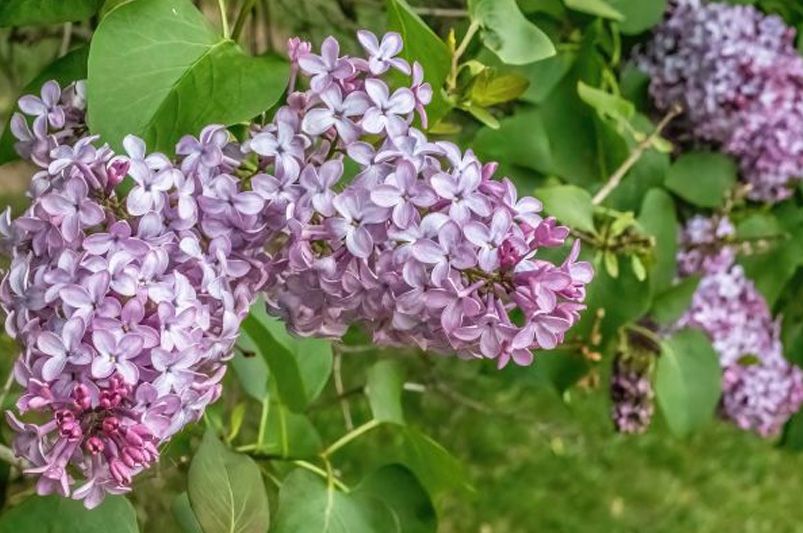
Bloomdales New Age Lavender Lilac
The Bloomables® New Age™ Lavender Lilac (Syringa vulgaris 'G13099' PP32,623) is a compact, deciduous shrub that grows to approximately 4 to 5 feet in both height and width. It showcases large, fragrant lavender flower clusters in spring, each composed of about 100 tiny blooms. This modern variety offers enhanced resistance to powdery mildew and maintains attractive green foliage throughout the growing season. Thriving in full sun and well-drained soil, it attracts pollinators like butterflies and is suitable for small gardens, borders, and container planting.

Bloomerang Dark Purple Lilac
The Bloomerang® Dark Purple Lilac (Syringa x 'SMSJBP7' USPP 26,549, Can 5,076) is a deciduous shrub known for its extended blooming period and disease resistance. It grows to a height and width of 4 to 6 feet, forming a naturally rounded shape. In mid to late spring, it produces large, fragrant dark purple buds that open to classic deep purple-lilac flowers, perfuming the air for weeks. After a brief rest, the plant reblooms from mid to late summer through frost. Thriving in full sun and well-drained soil, this lilac attracts butterflies and resists deer, making it a versatile choice for landscapes and gardens.
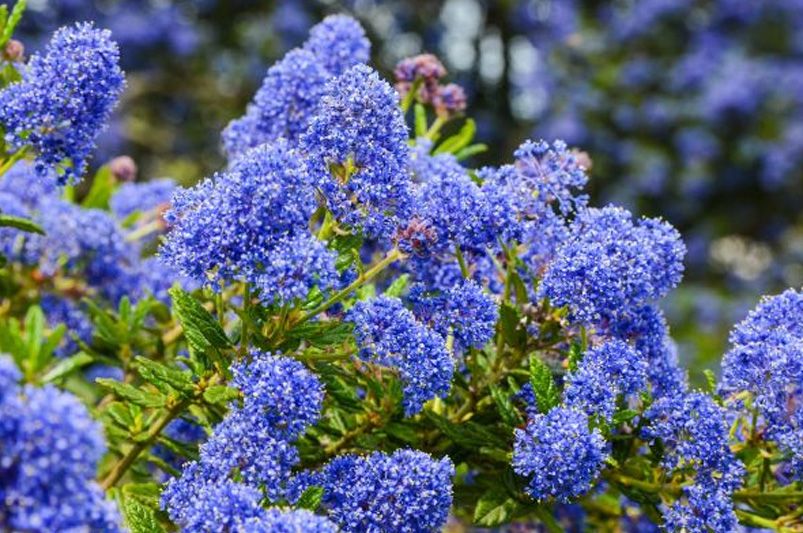
California Lilac
The California Lilac (Ceanothus) is a versatile, drought-tolerant shrub native to the western U.S., especially California. It features vibrant blue, white, or pink flower clusters and glossy green foliage. Blooming mainly in spring, it ranges from low ground covers to tall shrubs or small trees. California Lilacs thrive in full sun and well-drained soil, attracting pollinators like bees and butterflies.
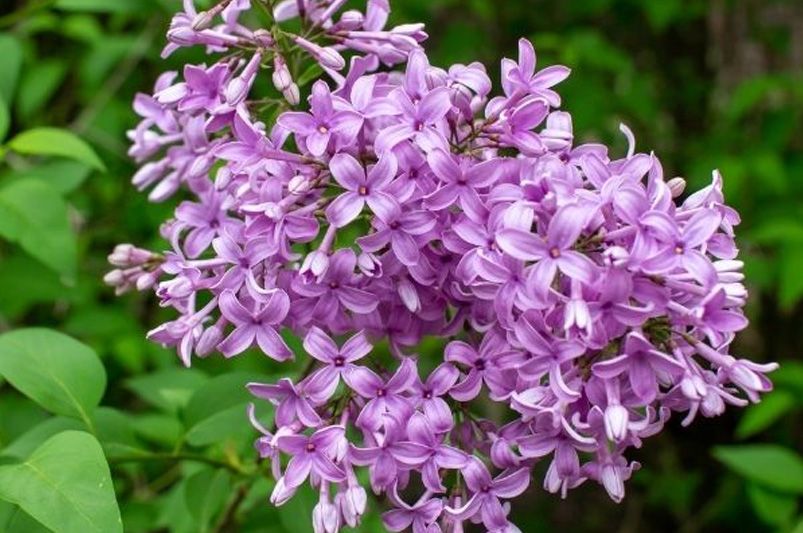
Chinese Lilac
The Chinese Lilac (Syringa × chinensis) is a deciduous shrub known for its arching branches and abundant clusters of fragrant, pale purple to lavender flowers that bloom in late spring. A hybrid between Syringa vulgaris and Syringa persica, it typically grows 8 to 12 feet tall and wide. Chinese Lilac thrives in full sun and well-drained soil, making it ideal for borders, hedges, or as a standout specimen in the garden. It’s also appreciated for its strong fragrance and appeal to pollinators.
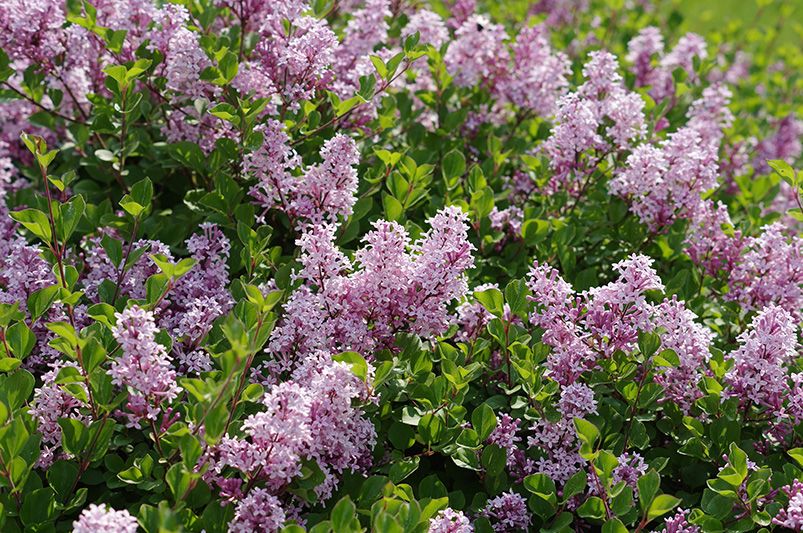
Dwarf Korean Lilac
The Dwarf Korean Lilac (Syringa meyeri 'Palibin') is a compact, deciduous shrub that grows 4 to 5 feet tall and wide, making it perfect for small gardens and borders. It produces masses of fragrant, pale purple flowers in late spring, with occasional reblooming in summer. Known for its rounded shape and dense, dark green foliage, this lilac thrives in full sun and well-drained soil. It’s also resistant to powdery mildew and attracts butterflies while being deer-resistant.

Little Lady Lilac
The Little Lady™ Lilac (Syringa x 'Jeflady' PP30,331) is a compact, deciduous shrub that grows 4 to 5 feet tall and wide. In late spring, it produces fragrant lilac-pink flowers emerging from dark pink buds, contrasting with its fresh green foliage. The plant has an upright, rounded form, making it ideal for foundation plantings or informal hedges. It thrives in full sun and well-drained soil, attracting butterflies and other pollinators. Additionally, it exhibits tolerance to salt and clay soils.
Preparing to Grow Lilacs
Before you add these lovely lilacs to your garden, you need to know what they need. Picking the right spot for planting is very important if you want them to do well. Think about things like sunlight, soil quality, and how much space you have. These factors will help your lilacs grow strong.
It's also important to choose the right type of lilac for where you live. Look into the needs of different varieties. This will help you make smart choices based on your climate and what you want your garden to look like.
Essential Tools and Materials for Starting
Planting lilacs is easy, but having the right tools will help a lot. Use this checklist to make sure your planting goes well:
- Shovel or spade: Pick a strong shovel or spade that fits your soil type. This is what you’ll use to dig the planting hole.
- Gardening gloves: Wear gloves to keep your hands safe from blisters and scratches when you work with soil and plants.
- Compost or organic matter: Adding compost to your soil will help with drainage and give important nutrients to your lilacs.
- Mulch: Put a layer of mulch around your new lilac to keep moisture in and stop weeds from growing.
- Level or measuring tape: Use these tools to check that your lilac is at the right soil level and spaced correctly. The top of the root ball should be even with the surrounding soil.
Getting these items ready before you start will make planting easier. This way, you can focus on helping your new lilacs grow strong.
Selecting the Perfect Location: Light, Soil, and Space Considerations
Choosing the right spot for your lilacs is very important. This decision helps them stay healthy and bloom well. Lilacs need full sun. This means they require at least six hours of direct sunlight every day. They can handle a bit of shade, but too much shade may stop them from blooming and make them grow tall and weak.
Lilacs like well-drained soil that is slightly alkaline. If your soil is heavy with clay or gets too wet, it’s important to mix in compost or other organic matter to help with drainage. Doing a soil test can show you the pH of your soil and help you know what changes to make.
Lilacs come in different sizes, so you need to plant them at good distances. Smaller types, like dwarf lilacs, can be planted 4 to 5 feet apart. Bigger types, such as tree lilacs, need 10 to 15 feet between each plant. Giving them enough space helps improve air circulation. This reduces the chances of getting fungal diseases.
Step-by-Step Guide to Planting Lilacs
Now that you have picked a good spot and collected the needed tools and materials, it's time to plant your lilacs. By following these easy steps, you can make sure the planting goes well.
Planting your lilacs properly is key to keeping them healthy and strong. These steps will help you create the best place for your lilacs to grow and enjoy their beauty for many years.
Step 1: Timing Your Planting for Success
The best time to plant lilacs is when they are not growing, either in early spring or late winter. This choice depends on your climate. Planting them while they are dormant helps their root system grow before the busy spring season starts.
In colder areas where the ground freezes, it's best to plant in late winter or early spring. Wait until the soil is thawed and can be worked. This helps the roots settle down before summer heat arrives.
You can also plant lilacs in the fall, before the first frost, if you live in a milder climate. This gives the lilac a chance to start developing its roots before winter hits. Make sure to mulch around the base of the plant to keep the roots safe from frost.
Step 2: Soil Preparation and Planting Techniques
Before you plant, it's very important to prepare your soil. Lilacs grow best in loose soil that drains well and has a slightly alkaline pH. Start by digging a hole that is twice as wide as the lilac's root ball and just as deep. If your soil is heavy clay, mix in compost or other organic matter to help with drainage.
Carefully take the lilac out of its container. Be gentle to avoid hurting the roots. If you see any roots circling around, loosen them so they can grow outwards. Next, place the lilac in the middle of the hole. Make sure the top of the root ball is level with the soil around it.
Fill the hole back with the improved soil and gently press it down around the roots to get rid of air pockets. Water it well to settle the soil. Finally, add a layer of mulch that is 2-3 inches thick around the base of the lilac. Keep the mulch a few inches away from the trunk. This will help with air circulation and avoid rot.
Mastering Lilac Care
Once you plant lilacs, they are easy to take care of. But, they need enough water and nutrients to grow well and bloom. If you know what they need, your lilacs will give you beautiful flowers year after year.
The most important part of taking care of lilacs is to be consistent. Make sure to water them regularly, especially when it is dry. Also, adding some fertilizer now and then will help keep your lilacs strong and healthy.
Watering: How Much and How Often
Proper watering is very important for your lilacs, especially in the first few years after you plant them. Newly planted lilacs need consistent moisture to help their root system grow strong. Make sure to water them deeply and on a regular basis, especially when it’s dry.
As your lilac gets older and its root system becomes stronger, it can handle dry spells better. Still, you should give it extra water during long periods of heat and dryness. Watering deeply, but less often, is better than giving them frequent shallow water.
To see if your lilac needs water, feel the soil a few inches down. If it feels dry, it’s time to give it water. Water slowly and deeply so it goes into the root zone. Be careful not to overwater, as this can cause root rot.
Fertilizing: What You Need to Know
Lilacs don't need a lot of food, but they do benefit from fertilization every year. This helps add nutrients back into the soil and encourages healthy growth and lots of flowers. The best time to fertilize lilacs is in early spring, when the new growth starts to appear.
Use a balanced slow-release fertilizer, like a 10-10-10 mix, which works well for lilacs. Spread the fertilizer evenly around the base of the plant, reaching out to the area beneath the outer branches. After spreading the fertilizer, water the lilac deeply so the nutrients can sink down to the roots.
Be careful not to over-fertilize your lilacs because it can make them grow too many leaves and not enough flowers. If your lilac is in healthy soil and you often use compost, you might not need to fertilize every year. Keep an eye on how your lilac grows and blooms to understand what it needs.
Pruning and Maintaining Healthy Lilacs
Pruning is very important for keeping your lilacs healthy and strong. It helps to control their size, makes them grow bushier, gets rid of dead or sick branches, and most importantly, it helps them bloom a lot.
Even though it might seem odd to cut off parts that could grow flowers, knowing how lilacs flower is the secret to good pruning. With proper timing and technique, pruning can lead to beautiful flowers year after year.
When and How to Prune Lilacs
The best time to trim lilacs is right after they bloom. This is usually in late spring or early summer. Lilacs bloom on old wood. This means they make flowers on branches that grew the year before. Trimming after they flower gives the plant time to grow new branches that will bloom next season.
Start by taking away any dead or sick branches. Cut these back to the base of the plant or to a healthy bud that faces outward. Then, focus on shaping the lilac. Remove any branches that cross or grow inward. This can cause wounds and let in pests or diseases.
If you want to lower the height of the lilac, cut back tall branches to a side branch or bud. To keep it looking full and bushy, carefully remove some older canes. Cut these back to the base of the plant. This helps new growth to come from the crown and stops the lilac from getting too leggy and messy.
Pest and Disease Management Strategies
Lilacs are mostly good at resisting pests and diseases. However, they can still face some problems. One common issue is powdery mildew. This is a fungal disease that shows up as a white powder on the leaves. It does well in humid weather. You can prevent it by keeping good air circulation around the plant.
Another issue is root suckers. These are shoots that grow from the base of the plant. They can take away nutrients and water from the main plant. It is important to remove suckers often to keep the lilac healthy. When you take out suckers, pull them up from the ground at their base instead of just cutting them.
Honey fungus is a serious disease that affects the roots of lilacs. It can lead to the plant getting weak or even dying. You can spot it by the honey-colored mushrooms that grow at the base of sick plants. There is no cure for honey fungus, so prevention is important. Plant your lilacs at the right depth, avoid overwatering, and keep the area around them clean.
Conclusion
In conclusion, taking care of lilacs can be a great experience for anyone who loves gardening. To enjoy beautiful blooms, it's important to know how they grow, how to plant them properly, and how to care for them over time. Make sure to water them enough, fertilize, and prune your lilacs to keep them healthy. Choosing the right spot and type of lilac can make your garden more beautiful with these fragrant flowers. No matter if you are new to gardening or have experience, growing lilacs can add color and happiness to your yard. Enjoy the journey of growing these classic flowers. Dive into the world of lilacs and see the beauty they bring to your space.
Frequently Asked Questions
Can lilacs grow in shade?
Lilacs like full sun. They need at least six hours of direct sunlight each day for the best growth and blooming. If they are in some shade, they may still grow, but you will see fewer blooms, lighter pink flowers, and their leaves will not be as dark green.
How long does it take for a lilac to bloom?
A new lilac bush usually needs 3 to 4 years to grow strong and start blooming well. After it’s established, the time it flowers can change based on the type. Generally, it blooms from late spring to early summer.
Are lilacs toxic to pets?
The common lilac (Syringa vulgaris) and most other lilac varieties are usually safe for dogs, cats, and horses. But it is a good idea to keep pets from eating garden plants. This is because some animals may react differently.
How do I encourage more blooms on my lilac bush?
To get more lilac flowers, make sure the bush gets enough sunlight. Cut back the stems right after they flower because lilacs grow blooms on old wood. Keeping the soil rich and watering it correctly will also help the flowers grow better.
Can I grow lilacs in a pot?
Yes, dwarf Korean lilacs and other compact lilac varieties are great for container gardening. Make sure to choose a pot that is at least twice the size of the root ball. Use a potting mix that drains well. Also, remember to give them enough sunlight and water to help them grow successfully.


